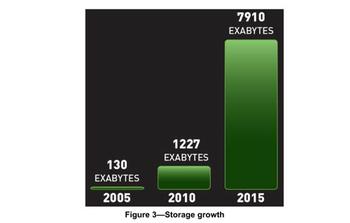The Institute of Electrical and Electronics Engineers (IEEE) has announced it intends to raise wired Ethernet speed capabilities by up to 1Tbps by 2015. A newly formed IEEE 802.3 Industry Connections Higher Speed Ethernet Consensus group has the task of upgrading the Ethernet standard to this new data transfer rate goal. A 1Tbps Ethernet connection would be able to transfer the equivalent of two and a half Blu-ray movies in one second.
The Ethernet standard needs upgrading because of the growth in bandwidth requirements in many computing reliant industries. IEEE researchers “…looked at a variety of application spaces including servers, data centre networks, high performance computing, financial markets, carrier and cable operators, Internet exchanges, and the scientific community.” Furthermore “The bandwidth associated with core networking was observed, on average, to be doubling every eighteen months. On the other hand, the bandwidth capability associated with high volume x86 servers and computing applications, fuelled by Moore's Law, was doubling every twenty-four months.”
The Ethernet Working Group postulated that “If the current trend continues, then this translates to an increase in traffic of a factor of 10 by 2015 compared to 2010 and by a factor of 100 by 2020” Infrastructure needs to be upgraded to satisfy these requirements or bottlenecks will hinder industry progress.
Streaming media and cloud storage have been major factors in the growth of global bandwidth requirements over the last couple of years. 10Gbps Ethernet equipped data centres have grown in popularity to cater for higher bandwidth requirements from users.
“Over the next decade, the number of servers (physical and virtual) is expected to grow by a factor of 10, storage is expected to grow by a factor of 50 (see Figure 3) and the number of files is expected to grow by a factor of 75.”
Talking about the practicalities of implementing new faster Ethernet standards, John D'Ambrosia, chair of new Higher-Speed Ethernet Consensus group, talked to c|net. He said “one has to worry about the technical feasibility and the economic feasibility”. A big worry is over the size and thickness of the required data cables using current cabling technology. To make a 1Tbps cable would require aggregating forty 25-gigabit connections then doubling it for 2-way communications. Mr D'Ambrosia suggested the resulting cable would be “not pretty”.
However for home users current wired Ethernet standards are probably more than adequate, most people get by with wireless and homeplug home networking as laying Ethernet cables round homes can be an inconvenience not really tolerable by non-geeky folk. Also most home users are more restricted by their comparatively low speed broadband connections than their home networking speeds.









